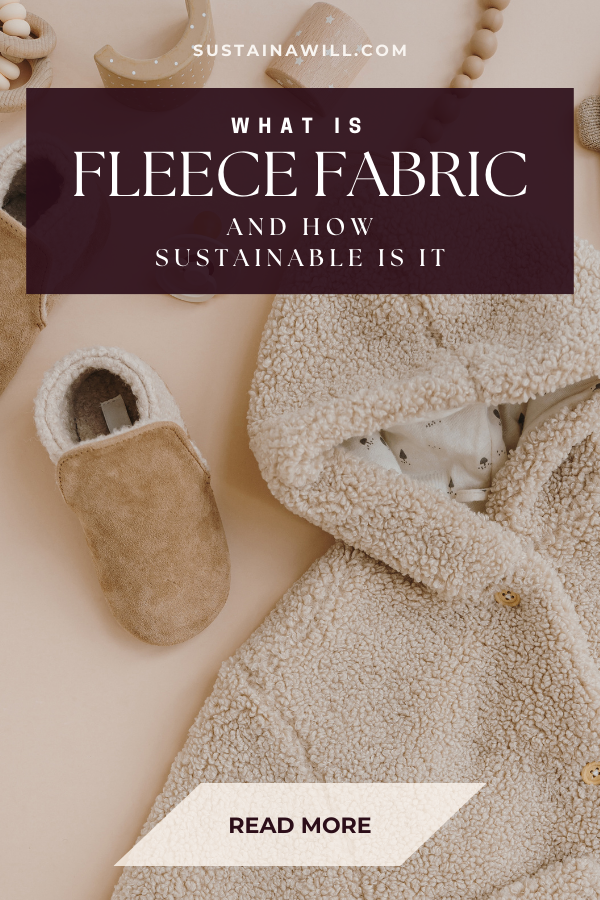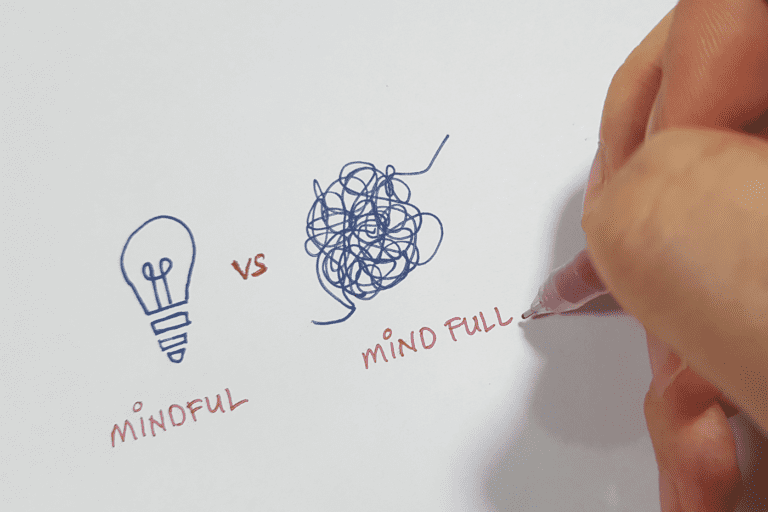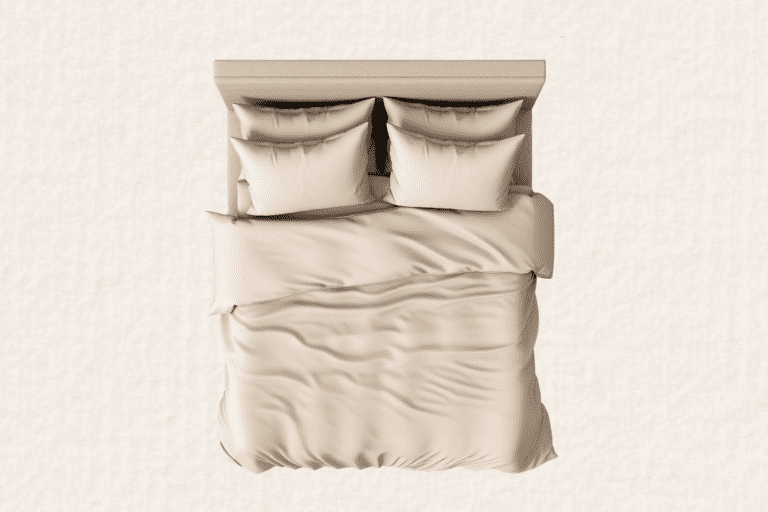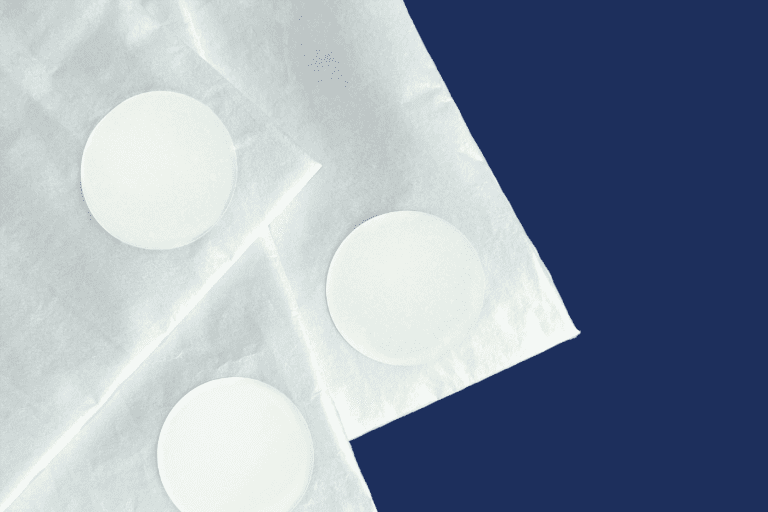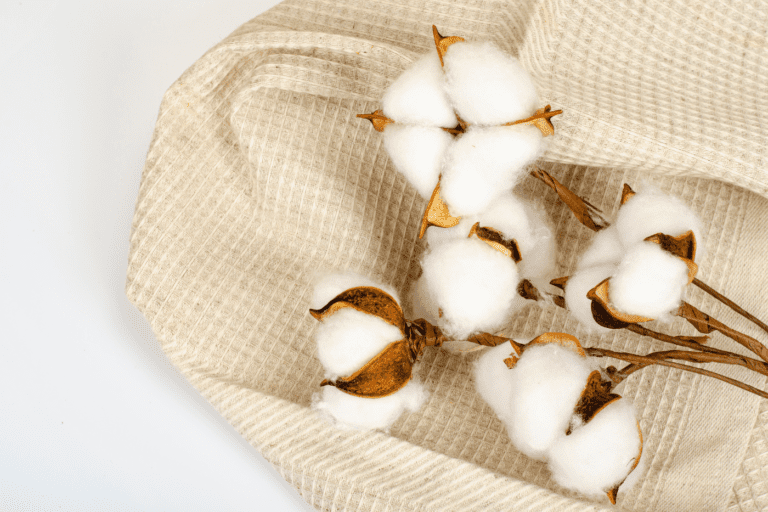Ever found yourself cozied up in a fleece jacket, wondering what this snug fabric is all about?
Well, you’re in for a treat as we unravel the world of fleece and dive into the intriguing question – how sustainable is it, really?
What is Fleece Fabric?
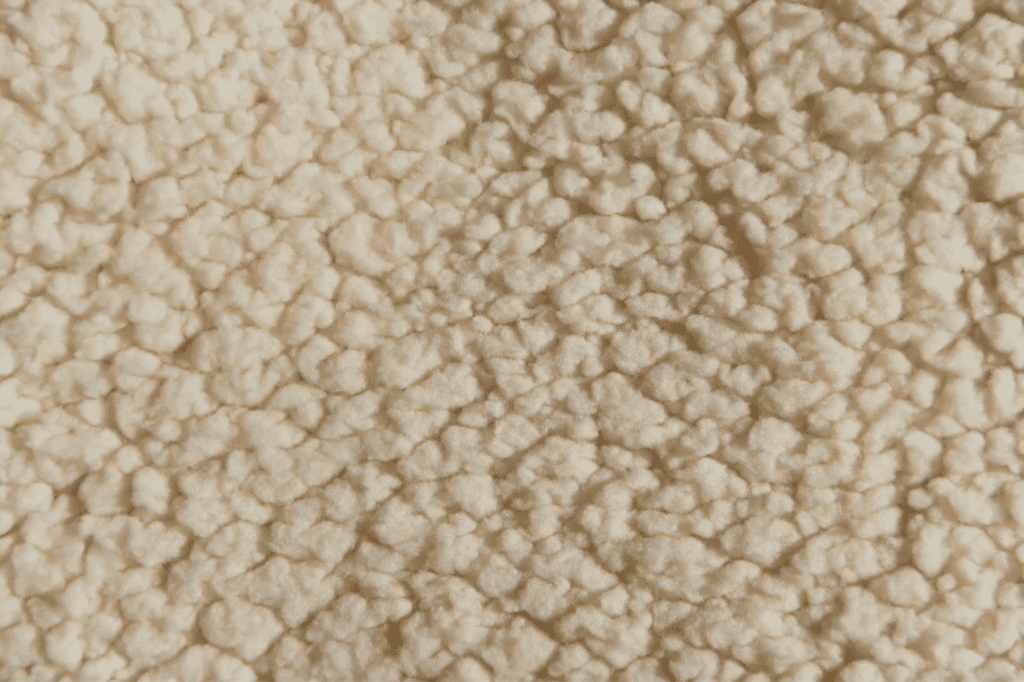
Fleece is a synthetic fabric known for its softness, warmth, and lightweight feel. It is made from polyester fibers that are tightly woven together, creating a plush texture reminiscent of natural wool.
Fleece is often used in various garments and outdoor gear to provide insulation and comfort.
Is fleece a polyester or cotton?
‘Traditional‘ fleece is primarily composed of polyester fibers and is not made from cotton. It is a synthetic material designed for warmth and moisture-wicking properties.
However, there are sustainable alternatives like Organic Cotton Fleece, which, as the name suggests, is made from organic cotton, a natural fiber known for its eco-friendly cultivation practices.
Is all fleece 100% polyester?
While not all fleece is 100% polyester, most conventional fleece fabrics contain a high percentage of polyester. Different blends and variations may exist, but polyester is a key component in fleece manufacturing.
What Is Fleece Fabric Used For?
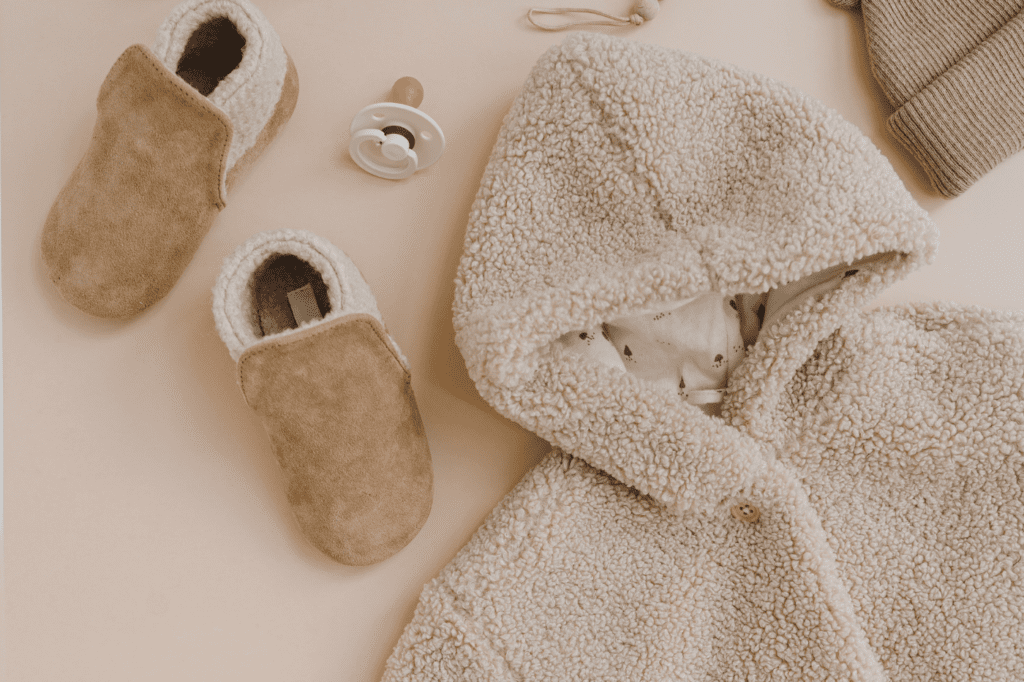
Versatile and comfortable, fleece fabric finds application in various products across different industries. Here are some common uses:
- Apparel: Fleece is widely used in clothing items like jackets, hoodies, sweatshirts, and pants for its warmth and softness.
- Blankets and Throws: Fleece blankets are popular for their coziness and lightweight design.
- Outdoor Gear: It is commonly incorporated into outdoor gear such as sleeping bags, gloves, and hats.
- Pet Accessories: Fleece is used in creating pet beds, blankets, and cozy accessories.
- Home Textiles: Fleece may be found in cushions, pillows, and other home textiles for added comfort.
- Sportswear: Many sportswear items, especially those designed for colder weather, utilize fleece for insulation.
- Children’s Clothing: Fleece is frequently used in kids’ clothing due to its softness and warmth.
- Accessories: Scarves, mittens, and hats often feature fleece for its insulating properties.
The adaptability of fleece makes it a sought-after material in a wide range of consumer products.
How Is Fleece Made?
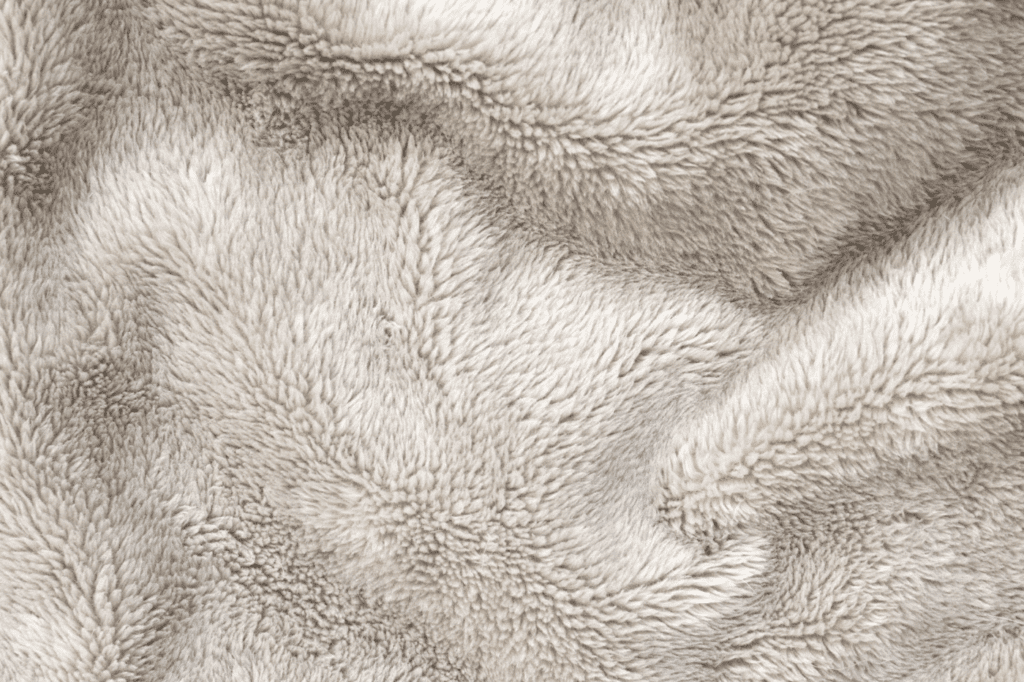
Fleece is typically made from synthetic fibers, primarily polyester. Here’s a simplified overview of the fleece manufacturing process:
- Raw Material: The primary raw fleece material is polyester, derived from petroleum-based chemicals.
- Polymerization: Polyester is created through a chemical process called polymerization, resulting in long chains of polymers.
- Extrusion: The polyester polymers are melted and then extruded through spinnerets to form fine threads.
- Spinning: These threads are then spun into yarns, which serve as the foundation for the fleece fabric.
- Knitting or Weaving: The yarns are knitted or woven into a fabric structure, creating the characteristic grid pattern of fleece.
- Finishing: The fleece fabric undergoes finishing processes to enhance softness, moisture-wicking properties, and other desired characteristics.
For a detailed explanation and demonstration of how polyester fleece is made, you can watch this informative video: Polyester Fleece Manufacturing Process.
Now, let’s delve into the sustainability aspects:
Is Fleece a Sustainable Material?
No, ‘traditional‘ fleece is made from polyester, a non-renewable resource, which raises concerns about sustainability.
In contrast, organic cotton fleece offers a more eco-friendly alternative, as it is derived from organic cotton, a renewable and biodegradable material that is grown without the use of synthetic pesticides or fertilizers.
What Are the Environmental Impacts of Fleece?
The production of polyester, as well as potential microfiber shedding during use and washing, contributes to environmental impacts including:
- Resource Depletion: Polyester production relies on non-renewable resources, contributing to resource depletion.
- Energy Intensive: The manufacturing process for polyester fleece is energy-intensive, leading to significant carbon emissions.
- Microfiber Pollution: During use and washing, polyester fleece can shed microfibers, contributing to water pollution and negatively impacting aquatic ecosystems.
- Limited Biodegradability: Polyester is not readily biodegradable, leading to long-lasting environmental persistence and waste management challenges.
Is Fleece a Microplastic?
Yes, fleece can shed microfibers, which are tiny plastic particles that can enter water systems and pose environmental challenges.
Considering these aspects, the sustainability of polyester fleece is a topic of discussion, and alternatives like recycled or eco-friendly fleece are explored to mitigate environmental impacts.
What are sustainable alternatives for fleece?
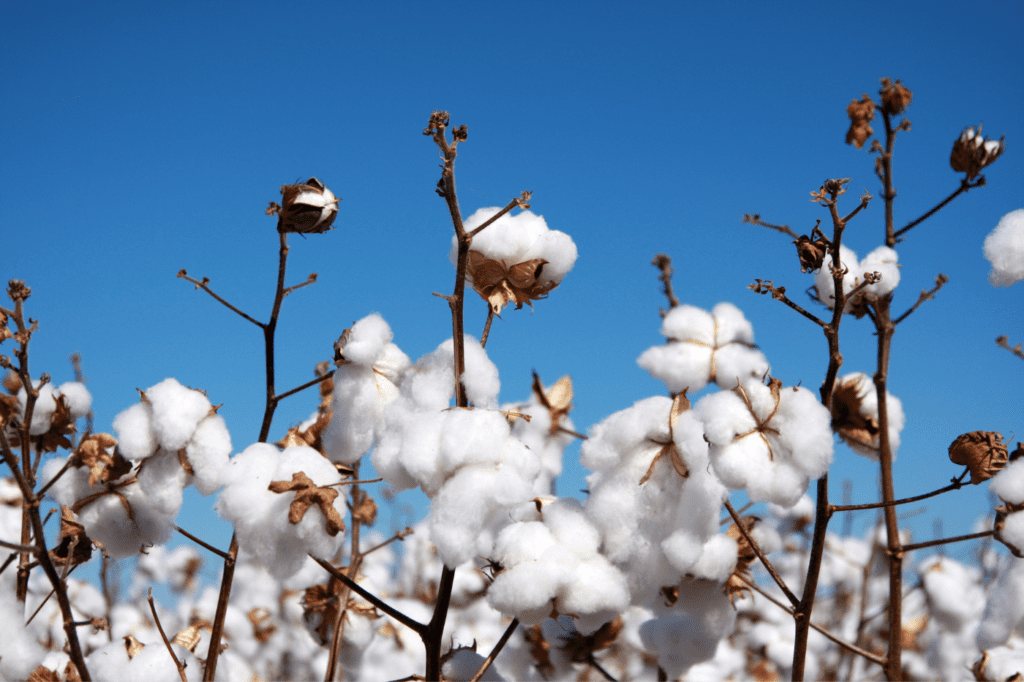
Exploring sustainable alternatives to traditional fleece is a fantastic step towards reducing your environmental footprint.
Here are several eco-friendly options that offer warmth and comfort:
- Recycled Fleece:
- Look for fleece made from recycled materials, such as recycled polyester. These fabrics utilize post-consumer plastic bottles or other recycled sources, reducing the demand for new raw materials.
- Organic Cotton Fleece:
- Organic cotton fleece is made from cotton grown without synthetic pesticides or fertilizers. It promotes soil health, reduces water usage, and eliminates exposure to harmful chemicals.
- Bamboo Fleece:
- Bamboo fleece is derived from bamboo, a fast-growing and sustainable plant. It is naturally antibacterial, moisture-wicking, and biodegradable. However, check for eco-friendly processing methods as some bamboo fabrics may involve chemical treatments.
- Hemp Fleece:
- Hemp is an incredibly sustainable crop that requires minimal water and no pesticides. Hemp fleece is durable, breathable, and naturally resistant to mold and UV rays.
- Tencel/Lyocell Fleece:
- Tencel or Lyocell is a fabric made from wood pulp, usually sourced from sustainably managed forests. It has a silky feel, excellent moisture-wicking properties, and is biodegradable.
- Wool Alternatives:
- Look for fleece alternatives made from ethical and sustainably sourced wool or alpaca. These natural fibers provide warmth and insulation, and some companies prioritize ethical practices in their production.
- Polartec® Power Air™:
- Polartec® Power Air™ is an innovative fleece technology designed to minimize microfiber shedding. This reduces environmental impact by preventing tiny fleece fibers from entering the ecosystem during washing.
- Upcycled Fabrics:
- Explore brands that use upcycled or repurposed materials to create fleece-like fabrics. These companies give new life to existing textiles, diverting materials from landfills.
- Pineapple Leather (Piñatex):
- While not a direct fleece alternative, Piñatex is worth mentioning. It’s a sustainable and cruelty-free alternative to leather made from pineapple leaf fibers. While not fleece-like, it’s a conscious choice for those seeking sustainable textiles.
- Econyl® Recycled Nylon:
- Econyl® is a regenerated nylon made from recycled materials such as discarded fishing nets and other nylon waste. Fabrics made from Econyl® can be used as sustainable alternatives to traditional fleece.
- Modal Fleece:
- Modal is a type of rayon made from beech tree pulp, which is a renewable and biodegradable resource. Modal fleece combines the softness of modal with the warmth and coziness of fleece, offering a comfortable and sustainable option.
When considering these alternatives, it’s essential to look for certifications or information about the manufacturing processes employed by the brands.
Advantages & Disadvantages of Fleece
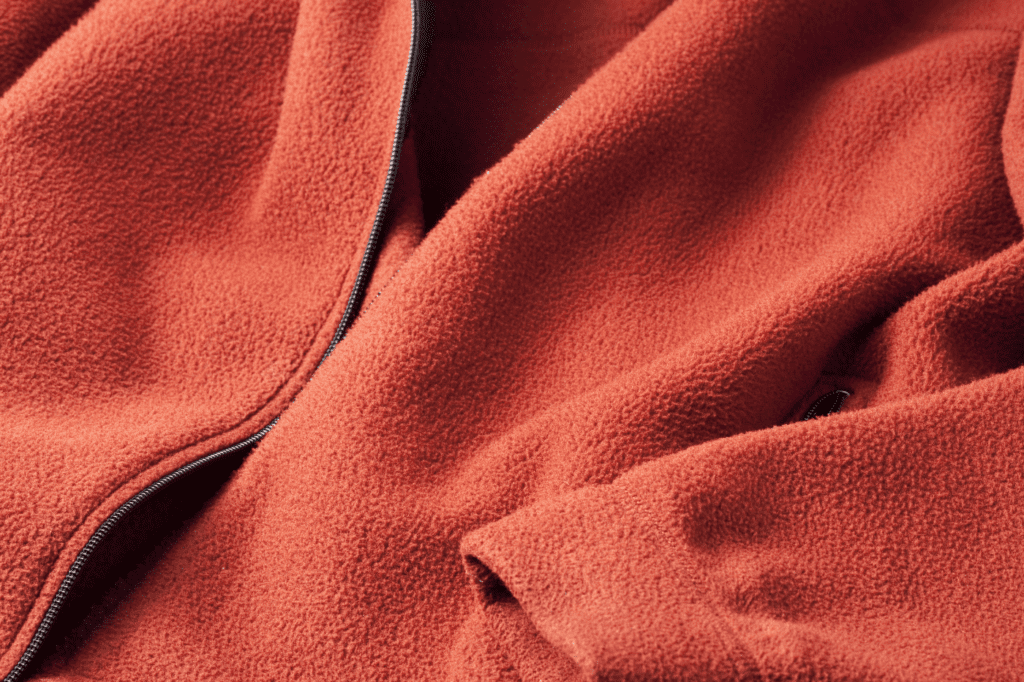
Advantages of Fleece Fabric
Efficient Insulator
- Fleece is adept at trapping and retaining heat, making it an efficient insulator. This quality keeps you warm without the bulk, making it an excellent choice for cold weather.
Lightweight and Packable
- One of fleece’s strengths lies in its lightweight nature. It provides substantial warmth without burdening you with heavy layers, making it convenient for travel and layering.
Quick Drying
- Fleece has a quick-drying attribute, which comes in handy when exposed to moisture. Whether it’s a drizzle or a sweat session, fleece won’t leave you damp for long.
Breathable Fabric
- Despite its insulating properties, fleece remains breathable. This allows moisture to escape, preventing that stifling feeling often associated with warmer clothing.
Low Maintenance
- Fleece is a straightforward fabric when it comes to care. Toss it in the washing machine, and it retains its form and functionality without demanding any special treatment.
Disadvantages of Fleece Fabric
Limited Water Resistance
- Fleece is not a material that repels water effectively. In heavy rain, it can saturate, compromising its insulating abilities.
Pilling Tendency
- Over time, fleece can develop pills, small fuzz balls on the surface. While not detrimental to functionality, it can impact the appearance. Regular maintenance with a fabric shaver helps keep it in check.
Static Electricity Buildup
- Fleece has a propensity to generate static electricity, resulting in occasional shocks. The use of fabric softener during washing can mitigate this phenomenon.
Wind Permeability
- Fleece isn’t the most wind-resistant fabric. When faced with windy conditions, layering with a windbreaker is advisable for better protection.
Environmental Considerations
- While some fleece products use recycled materials, not all adhere to sustainable practices. It’s worth checking for eco-friendly options if environmental impact is a concern.
In essence, fleece is a reliable companion in chilly weather, but like any material, it has its nuances.
How To Care For Fleece
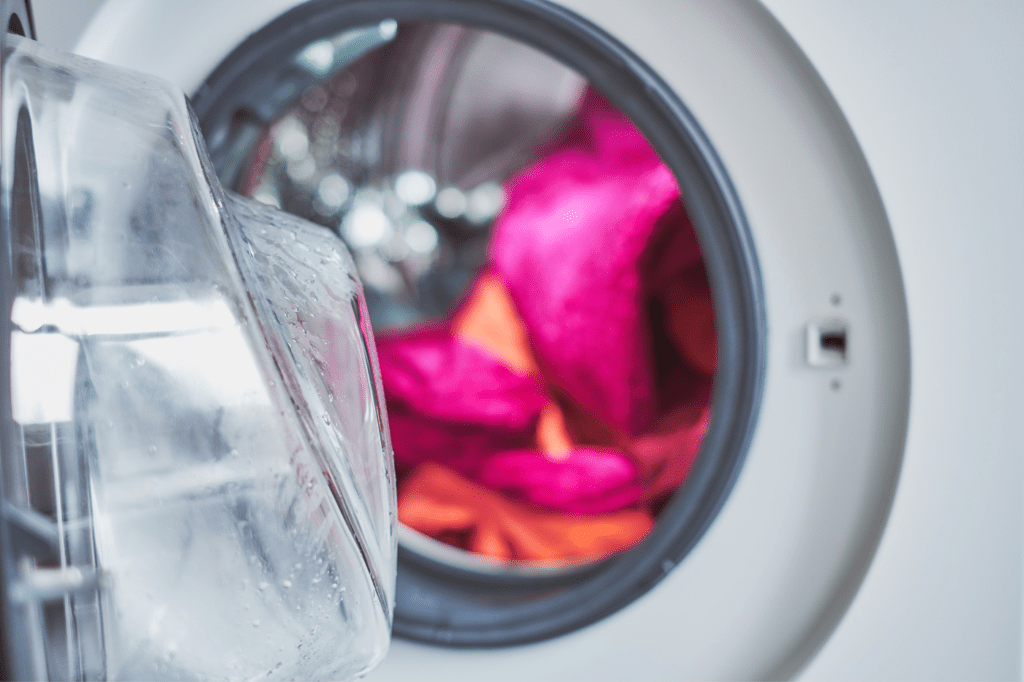
Caring for fleece is a breeze, and with a little TLC, you can keep it soft, cozy, and in top-notch condition.
Here’s a straightforward guide on how to pamper your fleece garments:
1. Read the Label
The golden rule – always check the care label on your fleece. Manufacturers provide specific instructions tailored to the particular type of fleece they’ve used.
2. Machine Wash with Care
Good news – fleece loves washing machines. Use a gentle cycle with cold water to prevent any potential shrinkage. Avoid hot water, as it can damage the fibers and affect the fleece’s texture.
3. Mild Detergent is Key
Keep it gentle. Opt for a mild detergent to preserve the softness of the fleece. Harsh chemicals can break down the fibers and diminish its insulating properties over time.
4. Avoid Fabric Softeners
Despite their charm, fabric softeners are a no-go with fleece. They can leave residues that hinder the fabric’s wicking properties. Stick to the basics – detergent and water.
5. Say No to Bleach
Bleach and fleece don’t play well together. It can cause discoloration and weaken the fabric. Stick to non-chlorine bleach if absolutely necessary, and even then, sparingly.
6. Keep It Separate
Wash fleece items with similar colors to prevent any potential color bleeding. You don’t want that vibrant red fleece turning everything in your laundry load a lovely shade of pink.
7. Skip the Heat
Fleece and high heat are not best friends. Avoid using high-temperature settings on your dryer. Instead, tumble dry on low heat or, better yet, air dry. This helps maintain the integrity of the fibers.
8. No Ironing Required
Good news for those who loathe ironing – fleece doesn’t need it. The fabric is naturally resistant to wrinkles. If you’ve air-dried it properly, your fleece should be good to go without any pressing.
9. Combat Static Electricity
If static cling becomes an issue, you can add a couple of tennis balls to the dryer. This helps to fluff up the fleece and minimize static.
10. Store with Care
When not in use, store your fleece items in a cool, dry place. Avoid hanging them to prevent stretching; instead, fold them neatly to maintain their shape.
With these simple steps, you’ll keep your fleece feeling as soft and snug as the day you brought it home.
Fleece vs Other Fabrics
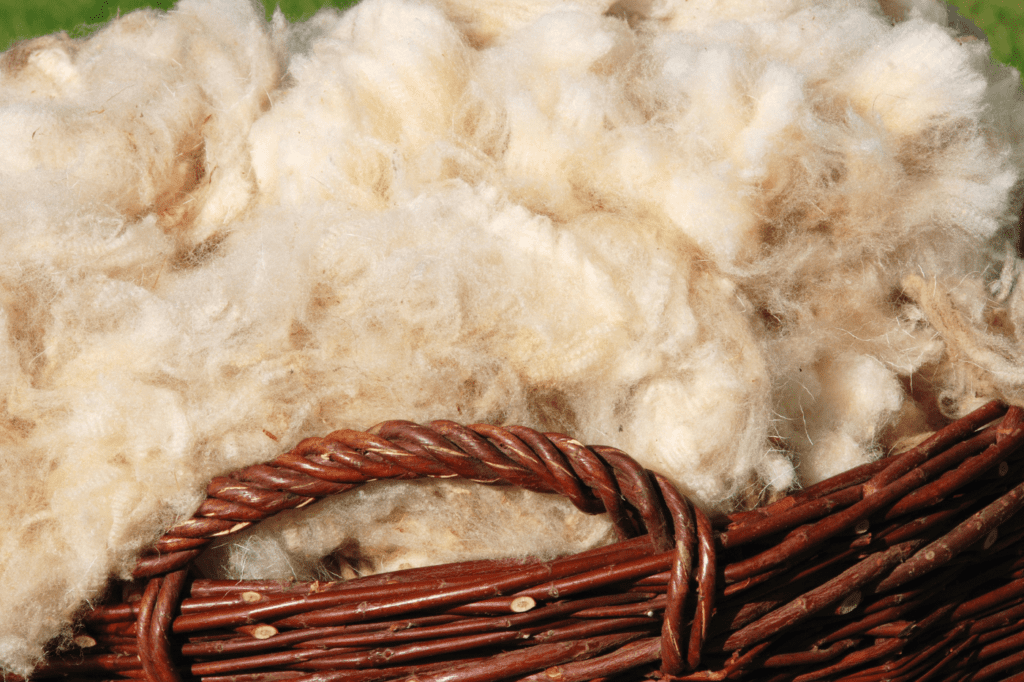
Fleece vs. Wool
1. Insulation:
- Fleece: Fleece is excellent at trapping heat and providing insulation. It is lightweight and provides warmth without the bulk.
- Wool: Wool is a natural insulator that regulates temperature. It retains warmth even when wet, making it a great choice for various weather conditions.
2. Moisture Management:
- Fleece: Fleece wicks moisture away from the body, keeping you dry and comfortable. However, it may not perform as well as wool in extremely wet conditions.
- Wool: Wool has the remarkable ability to absorb and evaporate moisture, making it a strong contender for staying warm in damp conditions.
3. Sustainability:
- Fleece: Traditional fleece is often made from synthetic materials like polyester, which are derived from non-renewable resources. However, there are eco-friendly fleece options made from recycled materials, reducing its environmental impact.
- Wool: Wool is a natural and renewable fiber. It is biodegradable, and many wool producers are adopting sustainable practices, such as ethical farming and eco-friendly processing.
Which is better fleece or wool?
While both fleece and wool have their merits, the overall winner depends on your priorities. If lightweight warmth, low maintenance, and quick drying are key factors, fleece is your go-to.
However, if you prioritize natural insulation, the ability to regulate temperature in various conditions, and sustainable sourcing, wool might be your preferred choice.
Fleece vs. Cotton
1. Insulation:
- Fleece: Offers excellent insulation and warmth, making it suitable for colder weather.
- Cotton: While comfortable, cotton is not as effective in insulation. It tends to absorb and retain moisture, which can make you feel cold in damp conditions.
2. Moisture Management:
- Fleece: Wicks moisture away from the body, keeping you dry.
- Cotton: Absorbs moisture, which can leave you feeling damp. Not ideal for activities that may induce sweating.
3. Sustainability:
- Fleece: Traditional fleece may have environmental concerns due to its synthetic origins, but there are sustainable options made from recycled materials. Some fleece brands are also incorporating eco-friendly practices into their production processes.
- Cotton: Cotton is a natural fiber, but conventional cotton farming often involves heavy pesticide use. However, there’s a growing trend towards organic cotton, which minimizes environmental impact.
Which is better fleece or cotton?
Fleece takes the lead for activities where insulation and moisture-wicking are crucial. If you’re in a colder climate or engaging in outdoor activities, fleece provides a better balance of warmth and practicality.
In terms of sustainability, both have their challenges, but the emergence of eco-friendly options is a positive step. Your choice may hinge on personal values regarding eco-conscious practices.
FAQs About Fleece Fabric
1. Is fleece hot or cold?
- Answer: Fleece is designed to be warm. It provides insulation by trapping body heat, making it an excellent choice for colder weather. It may feel too warm in hot temperatures.
2. Is fleece good for summer?
- Answer: Generally, fleece is not ideal for summer. It is designed for warmth, and wearing fleece in hot weather may lead to discomfort due to its insulating properties. Lightweight and breathable fabrics are better suited for summer.
3. Can fleece be cotton?
- Answer: No, fleece and cotton are distinct fabrics. Fleece is typically made from synthetic materials like polyester, while cotton is a natural fiber. There are cotton-blend fabrics that mimic the softness of fleece, but they are not the same.
4. Is fleece only for winter?
- Answer: Fleece is commonly associated with winter due to its warmth, but it comes in various weights. Lightweight fleece can be suitable for cool summer evenings or air-conditioned environments.
5. Is fleece good for your skin?
- Answer: Fleece is generally considered safe for the skin. It is soft and non-irritating. However, individuals with sensitive skin should be mindful of potential reactions to synthetic fibers and may opt for natural alternatives.
6. How long does fleece last?
- Answer: The lifespan of fleece depends on factors like quality, care, and frequency of use. With proper maintenance, high-quality fleece can last for many years. Regular washing according to care instructions helps preserve its durability.
7. What is similar to fleece?
- Answer: Fabrics like microfleece, sherpa fleece, and certain types of knit fabrics share characteristics with traditional fleece. Additionally, some synthetic fabrics with insulating properties may offer similarities.
8. Why do people wear fleece?
- Answer: People wear fleece for its exceptional warmth-to-weight ratio, soft texture, and breathability. It’s a popular choice for outdoor activities, layering in cold weather, and casual wear due to its comfort and versatility.
Conclusion
As we draw the curtain on our fleece fabric exploration, you’ve journeyed through the warmth, the softness, and the sustainability quandaries.
Now, with a better understanding, you might be thinking about your next fleece-related decision. The cozy embrace of fleece is undoubtedly inviting, but as discerning consumers, you hold the power to make choices that align with your values.
Now, with this newfound knowledge, take a moment to reflect on your wardrobe choices. Are there eco-friendly alternatives calling your name?
